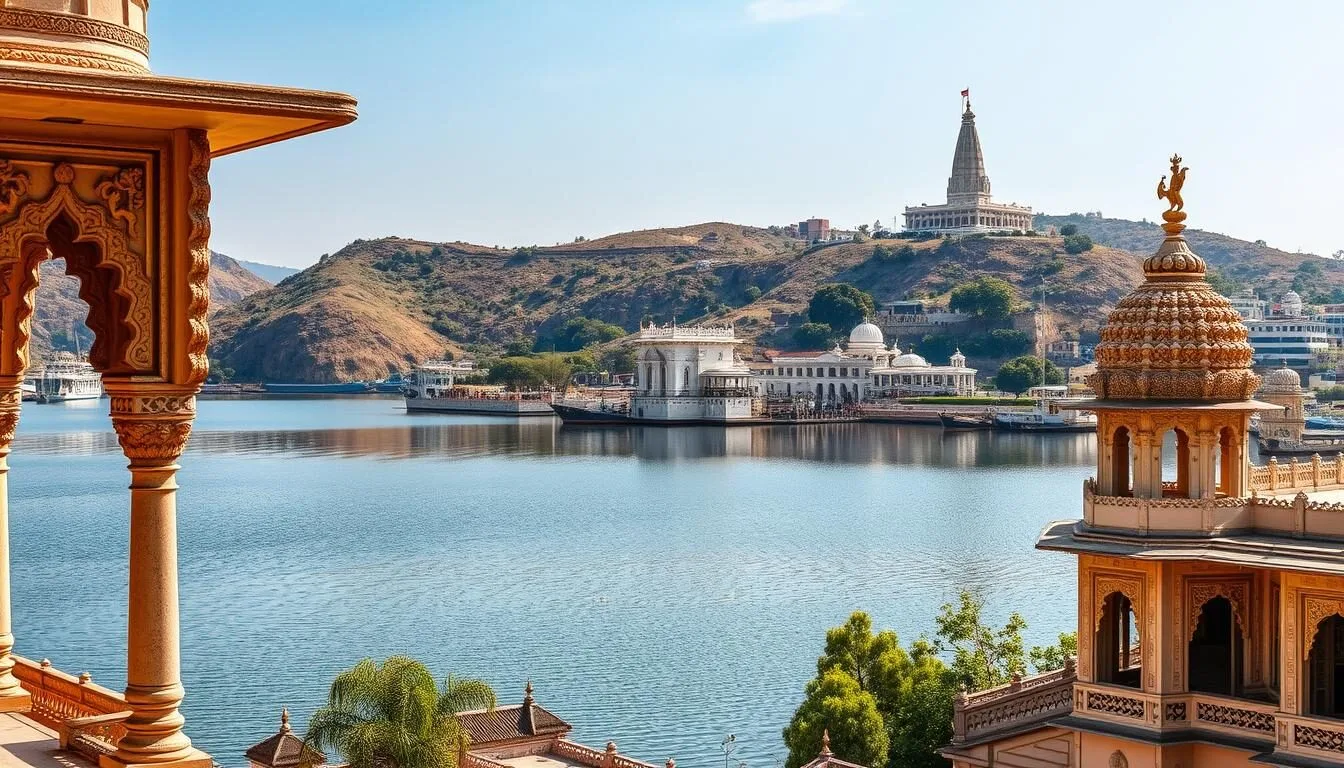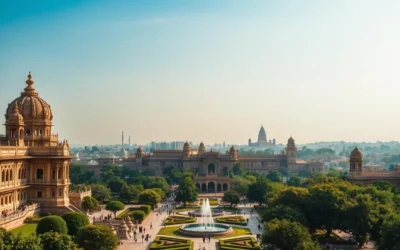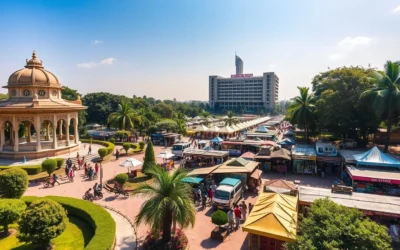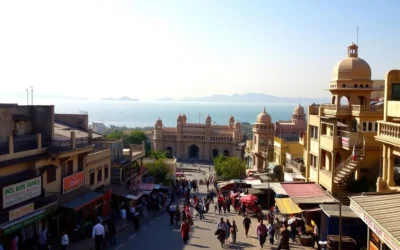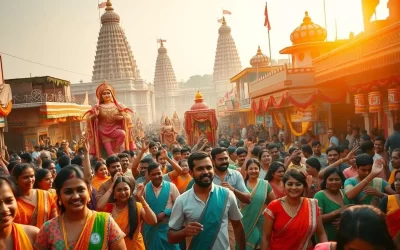Nestled in the western Indian state of Gujarat, Jamnagar is a city that proudly showcases its rich cultural heritage. Known as the “Jewel of Kathiawar,” this historic city is a must-visit destination.
With its founding by an heir of Lord Krishna and later influenced by European architecture under the supervision of cricketer KS Ranjit Sinhi, Jamnagar offers a unique blend of historical sites, natural beauty, and religious attractions. As you plan your visit, you’ll discover stunning temples, natural sanctuaries teeming with wildlife, and a plethora of other exciting experiences.
Whether you’re interested in exploring historical monuments, spiritual sites, or ecological wonders, this guide will help you navigate the top attractions in Jamnagar, ensuring a memorable trip to this culturally significant city.
Discover the Jewel of Kathiawar: Jamnagar’s Rich Heritage

Jamnagar, a city steeped in history, offers a unique blend of cultural and natural attractions. As a significant part of Gujarat’s heritage, the city is a must-visit destination for any tourist looking to explore the rich history and culture of the region.
The city’s fascinating history as the former Nawanagar state has shaped it into a city with diverse architectural styles. Some key highlights include:
- Jamnagar’s diverse architectural styles, ranging from traditional Indian temple designs to European-influenced structures.
- The city’s strategic location on the Gulf of Kutch, making it an important historical port and center for religious pilgrimage.
- Exploring Jamnagar offers a glimpse into Gujarat’s royal past, with many structures built during the Jadeja dynasty still standing.
- The city’s blend of religious significance and natural beauty, making it an ideal places visit for travelers seeking cultural immersion and outdoor experiences.
- Jamnagar’s heritage is evident in its layout, architecture, and the warm hospitality of its people.
When you visit Jamnagar, you’ll experience the city’s rich heritage firsthand, making it a valuable part of your travel journey.
Marine National Park: India’s First Marine Sanctuary

As India’s first marine sanctuary, the Marine National Park in Jamnagar is a must-visit destination for nature enthusiasts. Spanning 458 square kilometers in the Gulf of Kutch, this park is a treasure trove of marine biodiversity.
Exploring the Diverse Marine Ecosystem
The park’s unique ecosystem features a variety of habitats, including coral reefs and mangroves, supporting countless species of birds, fish, and reptiles. You’ll encounter a spectacular array of marine life, including vibrant coral reefs, colorful sponges, jellyfish, sea horses, and pearl oysters.
Best Time to Visit the Marine National Park
For the best experience, visit during the winter months (October to March) when the weather is pleasant and visibility for underwater viewing is optimal. Checking tide tables before planning your visit is highly recommended, as low tide periods offer the best opportunity to observe marine life up close.
Lakhota Lake and Fort: The Heart of Jamnagar
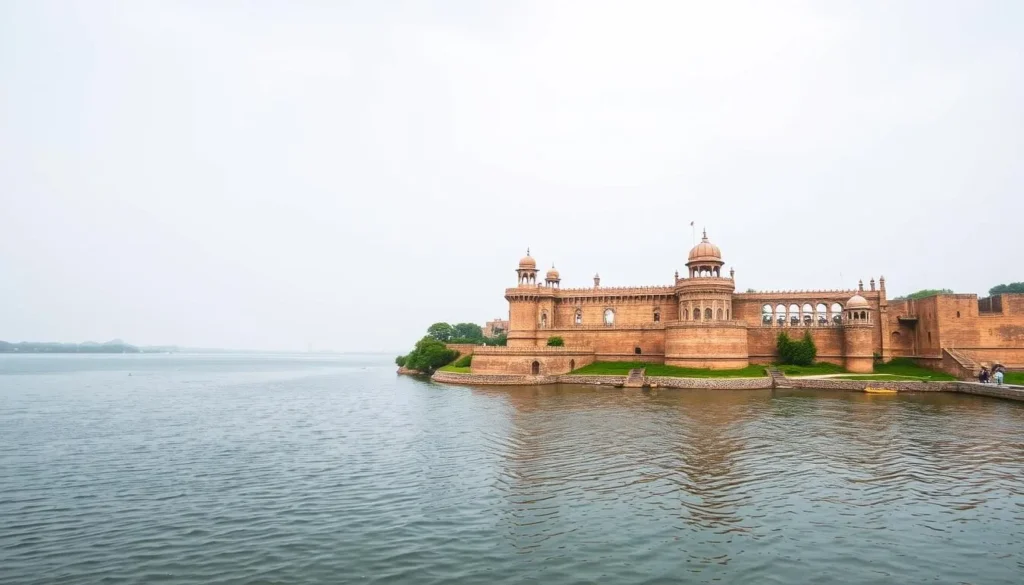
Lakhota Lake and Fort, situated in the city center, are the geographical and cultural heart of Jamnagar. The lake, also known as Ranmal Lake, surrounds the historic Lakhota Fort, creating a picturesque scene.
Historical Significance
The Lakhota Fort was built in the 19th century by King Jan Ranmal II of Navanagar as a defensive structure. The lake served as a natural moat, protecting the fort from invading armies. Today, the fort houses the Lakhota Museum, which showcases artifacts from the 9th to 18th centuries.
Bird Watching at Ranmal Lake
The lake is a haven for bird watchers, with over 75 species of native and migratory birds. You can spot flamingos, spoonbills, gulls, and pelicans, especially during the migration season. The early morning and evening hours are ideal for bird watching and relaxation.
Swaminarayan Temple: Architectural Marvel
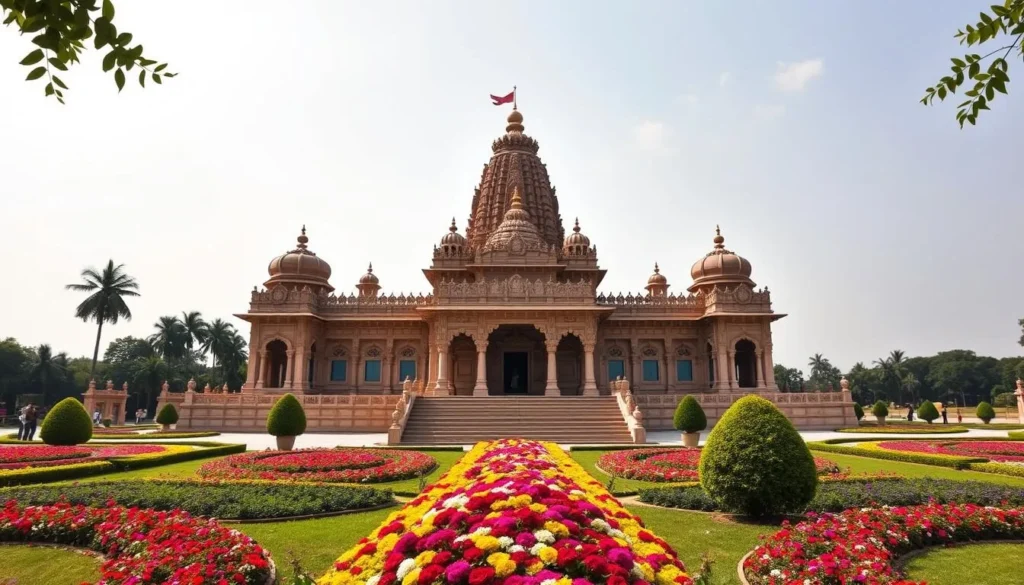
The Swaminarayan Temple, situated in a sprawling area near Jamnagar, is renowned for its stunning brown marble structure and serene ambiance. Located just 4 kilometers from the city center, this magnificent temple is a must-visit place for anyone traveling to the region.
The Stunning Marble Architecture
The temple’s architecture is a blend of modern and traditional styles, featuring intricate sculptures and detailed carvings that adorn its walls. The use of brown marble gives the temple a unique and majestic appearance, making it a standout temple in the region.
Spiritual Experience and Visiting Hours
Visitors to the Swaminarayan Temple can enjoy a peaceful experience amidst the calm atmosphere. The temple is open to the public between 7:30 PM and 9:00 PM daily, with free entry. The best time to visit the temple is during the morning and evening aarti ceremonies.
Mota Ashapura Maa Temple: The Seven-Eyed Goddess

Located at the eastern gateway of Jamnagar, the Mota Ashapura Maa Temple is a revered site dedicated to Maa Ashapura, a principal deity of Kutch. This temple is one of the most popular places to visit in Jamnagar, attracting devotees and tourists alike.
The Legend Behind the Temple
The legend behind the Mota Ashapura Maa Temple dates back to around 1300 AD when it was built by Karad Vanias, a minister in the court of Lakho Fulani, the ruler of Kutch. The temple’s history is deeply intertwined with the local culture and the belief in Maa Ashapura, known for fulfilling the desires and wishes of her devoted followers.
Religious Significance and Visitor Information
The Mota Ashapura Maa Temple is significant not only for its historical value but also for its religious importance. The idol of Maa Ashapura features seven pairs of eyes, symbolizing her all-seeing nature. Visitors can easily access the temple, which is located near Darbargadh, making it a convenient stop when exploring Jamnagar’s historical sites.
For those planning to visit, the temple’s strategic location at the eastern gateway to Jamnagar makes it both a spiritual landmark and a geographical reference point for the city. The temple is a must-visit destination, offering a glimpse into the rich cultural heritage of the region.
Khijadiya Bird Sanctuary: A Paradise for Bird Watchers

Located just 12 kilometers from Jamnagar, Khijadiya Bird Sanctuary is a haven for bird enthusiasts. This 6-square-kilometer sanctuary is home to around 220 different species of both native and migratory birds, including some that are close to extinction.
The sanctuary boasts a rich diversity of ecosystems, including marine and freshwater habitats, marshy lands, salt pans, mangroves, mudflats, creeks, sandy beaches, and forest scrub, making it a must-visit place for nature lovers.
Diverse Bird Species and Ecosystems
The Khijadiya Bird Sanctuary is a perfect representation of diverse ecosystems, supporting a wide variety of bird life. You can spot rare and endangered birds like the Dalmatian pelican and Asian open bill stork.
It serves as a breeding ground for numerous species, including Little Grebe and Black-winged Stilt.
Photography and Observation Tips
For bird watching enthusiasts, early morning and late afternoon are the best times to visit. A telephoto lens of at least 300mm is recommended to capture birds without disturbing them.
Bringing binoculars with at least 8x magnification and wearing neutral-colored clothing can enhance your observation experience.
Pirotan Island: Exploring the Gulf of Kutch

Pirotan Island, part of the Marine National Park, is renowned for its vibrant coral reefs and diverse marine life. As one of the 42 islands within the Gulf of Kutch, it covers approximately 3 square kilometers and is located 12 nautical miles from Bedi Port.
How to Reach and Permits Required
To visit Pirotan Island, you need to hire a boat from Bedi Port, a journey that takes around two hours. Obtaining permits involves a strict procedure with multiple government departments, including the Forest Department, Customs Department, and Ports Department. International visitors must also secure permission from the Police Department.
Marine Life and Coral Reefs
The island’s marine life and coral reefs offer spectacular viewing opportunities, with diverse ecosystems supporting colorful coral formations, tropical fish, sea turtles, and various marine invertebrates. This variety of marine life makes Pirotan Island a unique place to visit and explore.
It’s essential to note that there are no accommodation facilities, food services, or freshwater sources on the island, so you must prepare accordingly for a day trip.
Bala Hanuman Temple: Home to Continuous Chanting
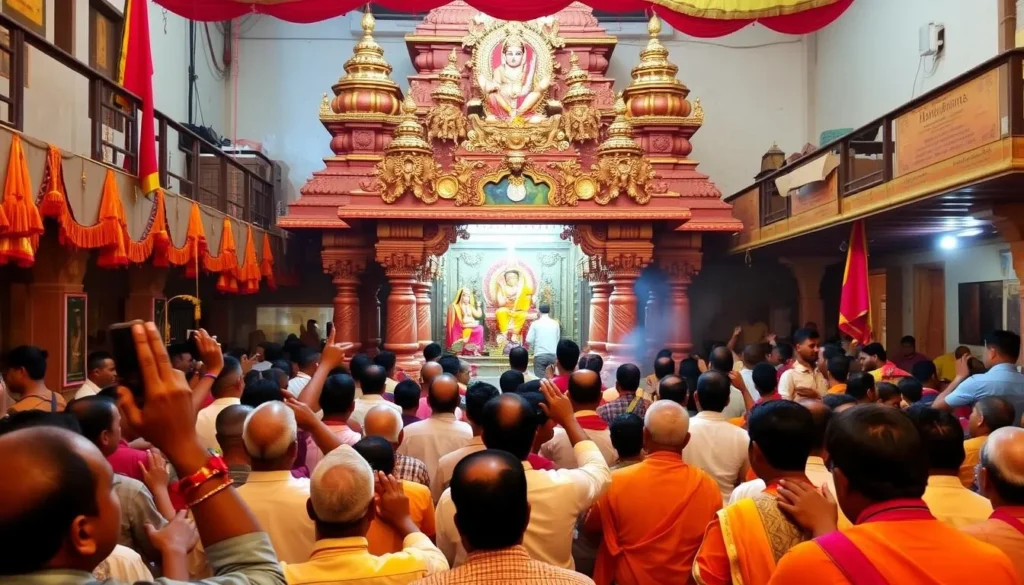
The Bala Hanuman Temple, a revered site in Jamnagar, is renowned for its continuous chanting tradition. Located on the southeast side of Ranmal Lake, this temple is dedicated to Lord Hanuman and features idols of Lord Ram, Lord Lakshman, and Goddess Sita.
The Guinness World Record for Non-Stop Chanting
The temple holds the prestigious Guinness World Record for the longest continuous chanting of “Ram Dhun,” with devotees reciting “Shri Ram, Jai Ram, Jai Jai Ram” non-stop since August 1, 1964. This tradition has continued 24 hours a day for over five decades.
Evening Aarti Experience
The evening aarti is a captivating experience, with beautiful lights, melodious chants, and hundreds of devotees creating a profound spiritual atmosphere. It’s the best time to visit and experience the temple’s vibrant energy.
Bet Dwarka: The Ancient Abode of Lord Krishna
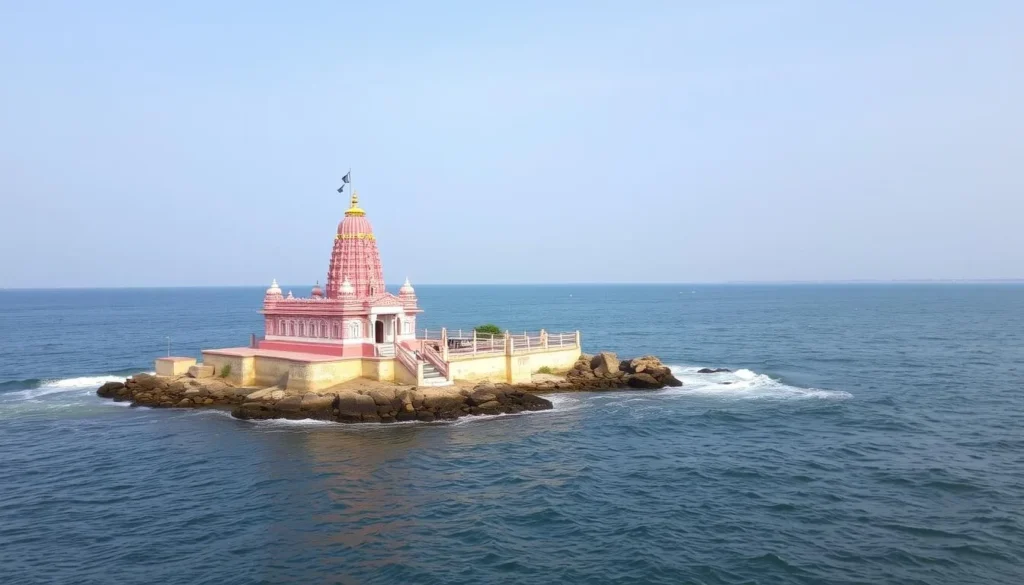
As you visit Jamnagar, a trip to Bet Dwarka is a must, offering a unique blend of spirituality, history, and scenic landscapes. Bet Dwarka, also known as Shankhodhar, is a small island that served as the main port in the region before the development of Okha.
Religious and Archaeological Significance
The island is home to numerous archaeological ruins and religious manuscripts that correspond to the original abode of Lord Krishna. The presence of these historical artifacts underscores the island’s importance as a cultural and religious center.
Activities and Nearby Attractions
You can enjoy various activities on the island, including dolphin watching, water diving, camping, and picnicking. The island is also home to several famous temples, such as the Hanuman Mandir. Nearby attractions include other islands in the area and the mainland Dwarka with its famous Dwarkadhish Temple.
Jamnagar, Gujarat: Best Things to Do – Top Picks for Every Traveler
Discover the charm of Jamnagar, a city that seamlessly blends tradition and adventure. Whether you’re a history buff, a nature lover, or an adventure seeker, Jamnagar has something special for you.
Cultural Attractions for History Buffs
Jamnagar is home to numerous cultural attractions, including the historic Lakhota Fort and the architecturally significant Darbargadh complex. Visit the Swaminarayan Temple and Mota Ashapura Maa Temple to experience the city’s rich spiritual heritage.
Nature Experiences for Wildlife Enthusiasts
For nature lovers, Jamnagar offers Marine National Park with its coral reefs and diverse marine life, and the Khijadiya Bird Sanctuary with over 220 bird species. Take a boat trip to Pirotan Island for an unforgettable experience.
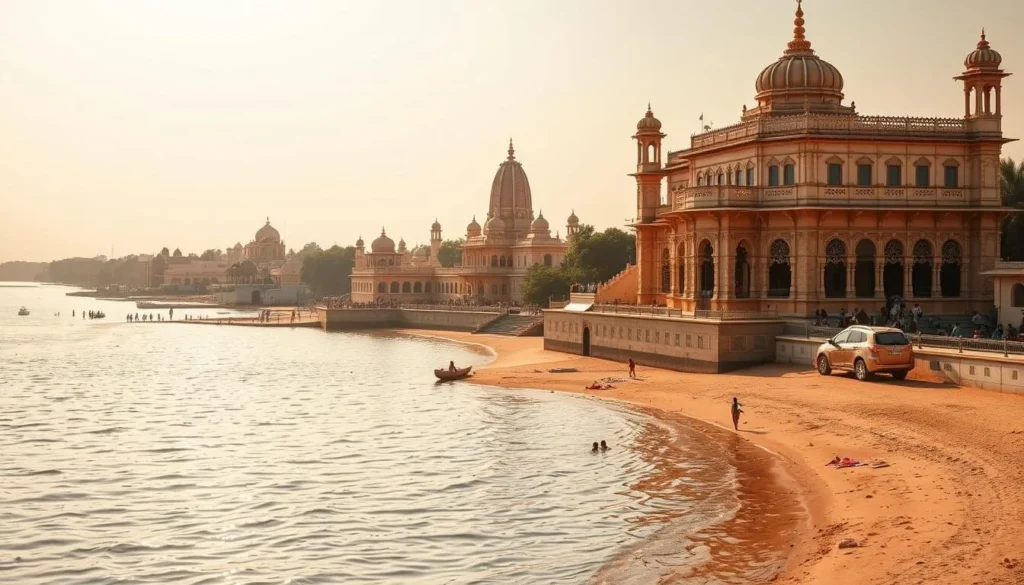
Conclusion: Planning Your Perfect Jamnagar Itinerary
Whether you’re a history buff, a nature lover, or a spiritual seeker, Jamnagar’s varied attractions make it a fascinating place to explore. To make the most of your visit, consider allocating at least 3-4 days to experience the city’s diverse offerings, from the Marine National Park to historical palaces and religious temples like the Ashapura Maa Temple.
The best time to visit is during the winter months (October to March), with pleasant temperatures between 10°C and 30°C. Plan your visits to religious sites during morning or evening hours for a more spiritual experience. Don’t miss the local Gujarati cuisine and check the official Gujarat Tourism website for updated information on attractions and events.
—
The above is subject to change.
Check back often to TRAVEL.COM for the latest travel tips and deals.
